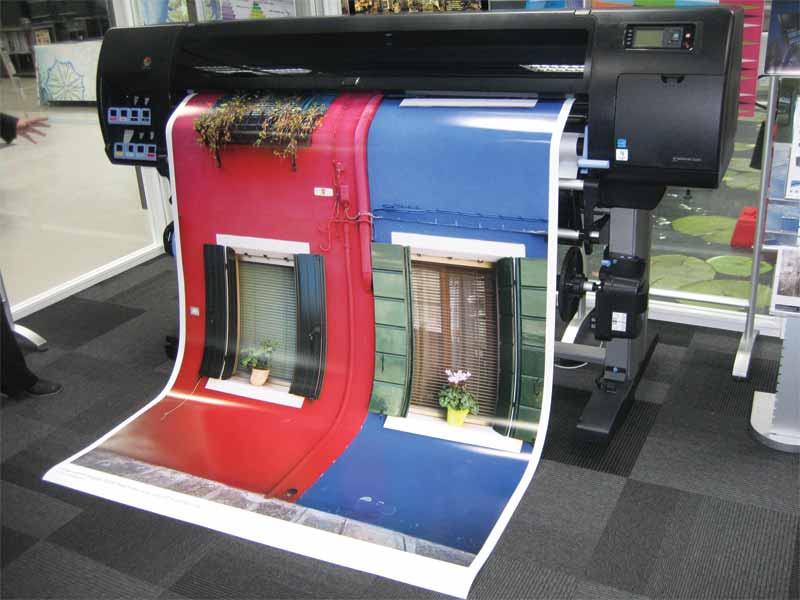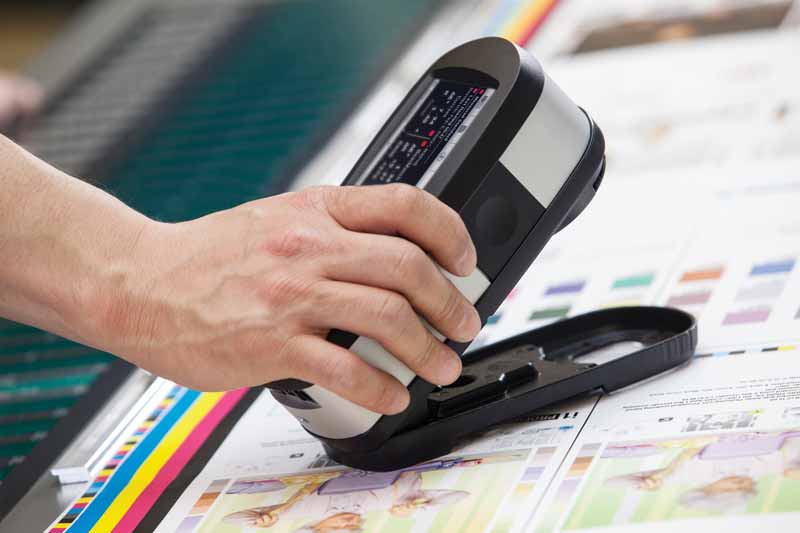En el negocio de la rotulación y la cartelería, como en muchos otros segmentos de la industria de impresión, las tiradas más cortas y los tiempos de ciclo reducidos pueden poner a prueba incluso las operaciones de impresión de formato ancho más eficientes. Mediante la implantación de un flujo de trabajo del RIP-to-Roll gestionado por el color, estas operaciones pueden garantizar que el color sea el correcto desde la primera vez y siempre, para ayudar a acelerar el trabajo en el taller y cumplir las expectativas de color.

Photo by Peter Saunders
Hoy compartimos consejos de nuestros Expertos en color que pueden ayudar a las empresas de rotulación y cartelería a conseguir un color uniforme, reducir los desperdicios, agilizar la comercialización y lograr la lealtad de los clientes.
Trucos del trabajo del color para formato ancho
Al igual que ocurre en cualquier flujo de trabajo de gestión del color, si el color está bien desde el comienzo, hay menos probabilidad de que los errores se acumulen a medida que el trabajo avanza por las distintas etapas de preprensa y producción. Esto implica asegurarse de que todos los dispositivos de captura y visualización de imágenes, incluidos las cámaras y los monitores, estén calibrados correctamente y cuenten con perfiles de color adecuados para garantizar que los gráficos impresos con cian, magenta, amarillo y negro (CMYK) coincidan lo mejor posible con los colores capturados y visualizados originalmente. Esto no solo logrará mejores resultados de impresión, sino que le permitirá capturar imágenes más precisas y visualizar el color en la pantalla, tal como se verá en la impresión.
Por suerte, hoy existen numerosas herramientas accesibles para perfilar y calibrar los dispositivos, que cumplen con los lineamientos del Consorcio Internacional del Color. Por ejemplo, X-Rite ofrece i1Pro 3 y i1Pro 3 Plus, así como el software de gestión del color de primera línea i1Profiler, que maximiza la flexibilidad y el control sobre estos importantes procesos.
El color del sustrato es importante
Cuando un proyecto incluye varios componentes impresos sobre diferentes sustratos, el color puede variar considerablemente si no se toman los recaudos necesarios. Por ejemplo, un proyecto para una exposición comercial puede incluir cloruro de polivinilo (PVC) y otros plásticos para componentes rígidos, así como papel, vinilo y textiles para cartelería flexible. El punto blanco de cada sustrato base puede afectar considerablemente la apariencia del resultado final de la impresión, por lo que es extremadamente importante tomar en cuenta cada material al desarrollar y comunicar las especificaciones de color de un proyecto dado.
Eficacia digital
A la hora de elegir y especificar el color, es fundamental utilizar referencias tanto físicas como digitales. A los diseñadores les encanta la experiencia táctil de elegir el color a partir de referencias físicas como fanales Pantone o artículos de inspiración. Pero las herramientas digitales actuales también facilitan la selección e incorporación de colores a un diseño, sobre todo si las pantallas están correctamente perfiladas y calibradas. Cuando los colores se especifican digitalmente -utilizando valores espectrales, o el "ADN" del color- hay mucha menos confusión a medida que el proyecto avanza por la preprensa y la producción. PantoneLIVE Design, un plug-in de Adobe, es una forma sencilla de trabajar con estándares de color digitales.
No puede gestionar lo que no puede medir.
La gestión del color es fundamental desde el diseño hasta la preprensa, la producción y el control de calidad. Desde especificar los colores Pantone adecuados en la fase de diseño, hasta el uso de i1Pro 3 o i1Pro 3 Plus para la caracterización y validación de pruebas, hasta eXact 2 de X-Rite en la sala de impresión, cada herramienta es fundamental en cualquier flujo de trabajo gestionado por el color. La captura de datos espectrales no solo garantiza que los estándares de color se comuniquen con claridad, sino que también proporciona una forma precisa de medir y controlar los resultados de la impresión.

Una luz proyectada sobre el color
Otro componente importante de un flujo de trabajo con una gestión del color adecuada es la iluminación controlada. Los colores pueden variar bajo las diferentes condiciones de iluminación. Una cabina de luz que cuente con distintos modos de iluminación permite evaluar el color bajo todas las condiciones en las que el material gráfico se observará en la vida real.
Un enfoque holístico
Optimizar el flujo de trabajo del color, desde el diseño hasta la producción, usando las herramientas y los consejos que se mencionan en este artículo puede ayudar a las empresas de rotulación y cartelería a lograr un color superior rápidamente. ¡Si aún tiene preguntas, nuestros Expertos en color están a su disposición!
Póngase en contacto con nosotros para obtener más información.
